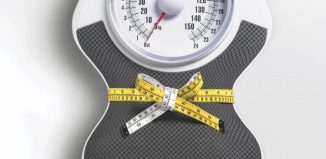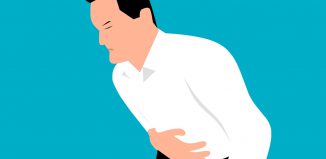Exercise and its powerful effects
The benefits may be comparable to some prescription drugs
I couldn’t resist writing one last article about exercise this year. There are some compelling studies that show exercise’s powerful effects in altering our genes. Recent studies show its impact on specific diseases. Last week I referred to its effect on diabetes (“Exercise: optimizing or reducing its effects,” Dec. 12). Exercise has effects on a host of other chronic diseases as well, including kidney stones, osteoarthritis, cardiovascular disease and breast, colorectal and endometrial cancers.1
There are also studies on simple ways to motivate yourself during exercise. One showed that those who repeat positive mantras like “feels good” while exercising were able to persist in their exercise routines for longer periods.2 To learn more about this, read the Dec. 12 article.
Why is this so important and why am I harping on exercise right before the holidays? Because we are too sedentary, and this is the time of the year when we are inclined to overeat. According to the 2005-06 National Health & Nutrition Examination Survey, we spend more than half our time sitting.3 And this percentage is trending up. Let’s look at the evidence.
Exercise and your genes
While you may be waiting for gene therapy to cure our chronic illnesses, it turns out that exercise may have a significant impact on our genes. No waiting required, this is here and now.
In a recent study, results showed that thousands upon thousands of genes in fat cells were affected when participants exercised.4 The study involved sedentary men and asked them to exercise twice a week by attending a one-hour spin class each time. According to the researchers, the genes impacted were those involved most likely in storing fat and in risk for subsequent diabetes and obesity development. Participants’ gene expression was altered by DNA methylation, the addition of a methyl group made up of a carbon and hydrogens. These participants also improved their biometrics, reducing fat and subsequently shrinking their waist circumferences, and improved their cholesterol and blood-pressure indices.
The effect is referred to as epigenetics, where lifestyle modifications can ultimately lead to changes in gene expression, turning them on and off. Therefore, just because you have been dealt a set a genes from your parents does not mean you can’t alter how a significant number of them act. This has been shown with dietary changes, but this is one of the first studies to show that exercise also has significant impacts on our genes. The amazing thing about this study is that it took only six months to see these numerous gene changes with modest amounts of cardiovascular exercise.
If this was not enough, another study showed substantial gene changes in muscle cells after one workout on a stationary bike.5
Exercise versus drug therapy
We don’t think of exercise as being a drug or having drug effects, but what if it had similar benefits to certain drugs in cardiovascular diseases and mortality risk? A meta-analysis — a group of 57 studies that involved drugs and exercise — showed that exercise potentially has equivalent effects to statins in terms of mortality with secondary prevention of coronary heart disease.6 This means that, in patients who already have heart disease, both statins and exercise reduce the risk of mortality by similar amounts. The same was true with pre-diabetes — prior to full-blown type 2 diabetes — and the use of metformin or exercise. It didn’t matter which one was used, the drug or the lifestyle change.
However, diuretics, also called water pills, were more effective than exercise in treating heart failure. This is interesting, since diuretics are used mainly for symptomatic relief and are not thought of in terms of mortality. Thus, the takeaway from this study is that exercise is very powerful and should be used in conjunction with therapies for cardiovascular disease, not instead of them. Don’t stop your medication based on the results of one meta-analysis. If you have further questions, always consult your physician.
Kidney stones and exercise
Anyone who has tried to pass a kidney stone knows it can be an excruciating experience. Most of the treatment revolves around pain medication, fluids and waiting for the stone to pass. However, the best way to treat kidney stones is to prevent them. In the Women’s Health Initiative Observational Study, exercise reduced the risk of kidney stones by as much as 31 percent.7 Even better, the intensity of the exercise was irrelevant to its beneficial effect. What mattered more was exercise quantity. One hour of jogging or three hours of walking got the top results. But lesser amounts of exercise also saw substantial reductions. This study involved 84,000 postmenopausal women, the population most likely to suffer from kidney stones.
Sex as exercise
We have heard that sex may be thought of as exercise, but is this myth or is there actual evidence? Try to keep a straight face. Well, it turns out this may be true. In the most recent study, published in the prestigious PLoS One journal, researchers found that young healthy couples exert 6 METs — metabolic energy, or the amount of oxygen consumed per kilogram per minute — during sexual activity.8
How does this compare to other activities? Well, we exert about 1 MET while sitting and 8.5 METs while jogging. Sexual activity falls between walking and jogging, in terms of the energy utilized, and thus may be qualified as moderate activity. Men and women burned slightly less than half as many calories with sex as with jogging, burning a mean of 85 calories over about 25 minutes. Who says exercise can’t be fun?
I can’t stress the importance of exercise enough. Although in last week’s article I noted that exercise with more intensity had better results, any exercise is good, as demonstrated with the kidney stone reduction study.
Exercise not only influences the way you feel, but also may influence gene expression and, ultimately, affects the development and prevention of disease. In certain circumstances, it may be as powerful as drugs and in combination may pack a powerful punch. Therefore, instead of just making exercise a New Year’s resolution, make exercise a priority — part of the fabric of your life. It may already be impacting the fabric of your body: your genes.
References: 1 JAMA. 2009;301(19):2024. 2 Med Sci Sports Exerc. 2013 Oct 10. 3 cdc.gov/nchs/nhanes.htm. 4 PLoS Genet. 2013 Jun;9(6):e1003572. 5 Cell Metab. 2012 Mar 7;15(3):405-11. 6 BMJ 2013; 347. 7 JASN online 2013, Dec. 12. 8 PLoS One 8(10): e79342.
Dr. Dunaief is a speaker, author and local lifestyle medicine physician focusing on the integration of medicine, nutrition, fitness and stress management. For further information, go to the website www.medicalcompassmd.com and/or consult your personal physician.






